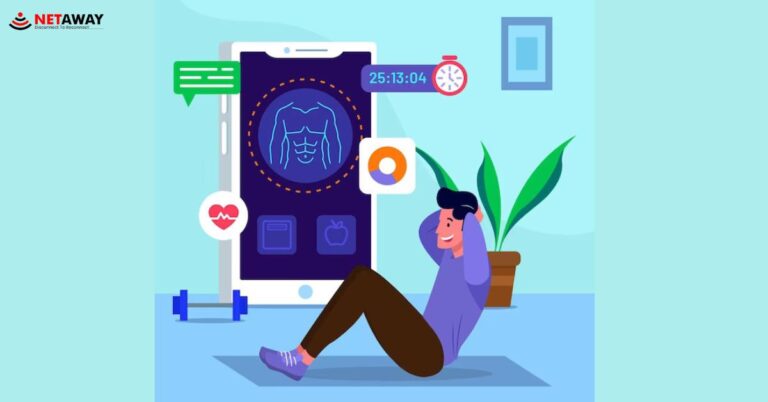
The internet has become an integral part of our lives, offering endless possibilities for communication, information, and entertainment. However, with the proliferation of digital devices and constant connectivity, it is crucial to address the concept of digital wellness. This blog aims to explore the importance of cultivating healthy habits in the internet age and provide practical tips to ensure a balanced and mindful approach to our digital lives.
Digital wellness encompasses various aspects, including physical, mental, and emotional well-being in the digital realm. While the internet has brought numerous benefits, excessive screen time and online engagement can negatively impact our health and relationships. It is essential to strike a balance and adopt healthy habits that promote digital wellness.
One key aspect of digital wellness is managing screen time. Spending excessive hours staring at screens can lead to physical health issues such as eye strain and sedentary behavior. It is important to set boundaries and allocate specific periods for digital usage, ensuring time for other activities like exercise, hobbies, and social interactions.
Understanding Digital Wellness
Digital wellness refers to the conscious and intentional use of digital technologies to promote well-being and foster a healthy relationship with the digital world. It encompasses various aspects, including mental and physical health, emotional well-being, social connections, and productivity. Achieving digital wellness requires individuals to strike a balance between the benefits of technology and the potential drawbacks it may have on our overall well-being.
The Impact of the Internet Age
The internet age has revolutionized the way we live, work, and communicate. While it offers numerous advantages, such as instant access to information and enhanced connectivity, it also presents challenges. Excessive screen time, digital distractions, and social media overload can lead to negative consequences, such as decreased productivity, sleep disturbances, and feelings of loneliness or anxiety. Recognizing and addressing these challenges is crucial to maintaining a healthy digital lifestyle.
Cultivating Healthy Digital Habits
- Setting boundaries: Establishing clear boundaries for technology use can help prevent over-consumption. Designating tech-free zones or specific times without screens can promote better balance in daily life.
- Mindful usage: Practicing mindfulness while using digital devices can enhance our awareness and prevent mindless scrolling. Taking regular breaks, practicing deep breathing exercises, and setting intentions before engaging with technology can be helpful.
- Prioritizing well-being: Allocating time for activities that promote physical and mental well-being is essential. Engaging in regular exercise, pursuing hobbies, spending time in nature, and fostering face-to-face social connections should take precedence over excessive screen time.
- Digital decluttering: Regularly decluttering digital spaces, such as emails, notifications, and social media accounts, can reduce information overload and improve focus.
- Embracing digital detox: Taking periodic breaks from technology, such as weekends or vacations, allows for rejuvenation and helps reset our relationship with digital devices.
- Setting realistic goals: Setting achievable goals related to technology use can help maintain a healthy balance. For example, limiting social media usage to a certain time frame or reducing screen time before bed can significantly improve sleep quality.
Promoting Digital Wellness in Society
Promoting digital wellness requires collective efforts, involving individuals, families, educational institutions, and society as a whole. Some initiatives include:
a. Education and awareness: Schools and institutions should incorporate digital wellness education into their curricula to educate young individuals about healthy digital habits.
b. Parental involvement: Parents play a crucial role in guiding their children’s digital habits. Encouraging open communication, setting limits, and being role models in their own technology use is essential.
c. Workplace well-being: Employers can promote digital wellness by encouraging breaks, implementing digital detox programs, and fostering a healthy work-life balance.
d. Government and policy interventions: Governments can implement policies to regulate technology use, promote digital literacy, and support research on the impact of technology on mental health.
Conclusion
In the internet age, cultivating healthy digital habits is vital to maintain our overall well-being. By understanding the concept of digital wellness and implementing practical strategies, we can strike a balance between technology’s benefits and its potential drawbacks. Whether it’s setting boundaries, practicing mindfulness, or promoting digital wellness in society, each step contributes to a healthier relationship with the digital world. Let us embrace the power of technology while prioritizing our well-being, both online and offline.
Q1. What are some healthy digital habits?
Ans. Some healthy digital habits include setting screen time limits, practicing mindfulness while using the internet, maintaining a balanced online/offline life, and prioritizing real-life connections over excessive social media use.
Q2. What are the benefits of digital wellness?
Ans. The benefits of digital wellness include improved physical health, enhanced mental well-being, reduced stress, better relationships, increased productivity, and a balanced approach to digital engagement.
Q3. How can I create healthy digital habits?
Ans. To create healthy digital habits, set boundaries for screen time, prioritize offline activities, practice mindfulness, engage in physical exercise, limit social media use, and cultivate meaningful relationships beyond the digital realm.
Q4. What are the activities on digital wellness?
Ans. Activities on digital wellness include managing screen time, practicing mindfulness, engaging in offline hobbies, nurturing offline relationships, setting boundaries, prioritizing mental and emotional well-being, and being conscious of emotional reactions to online content.
Q5. What are digital activities?
Ans. Digital activities refer to online tasks and engagements conducted through digital devices and the internet, such as browsing websites, social media interactions, online gaming, and streaming media content.
